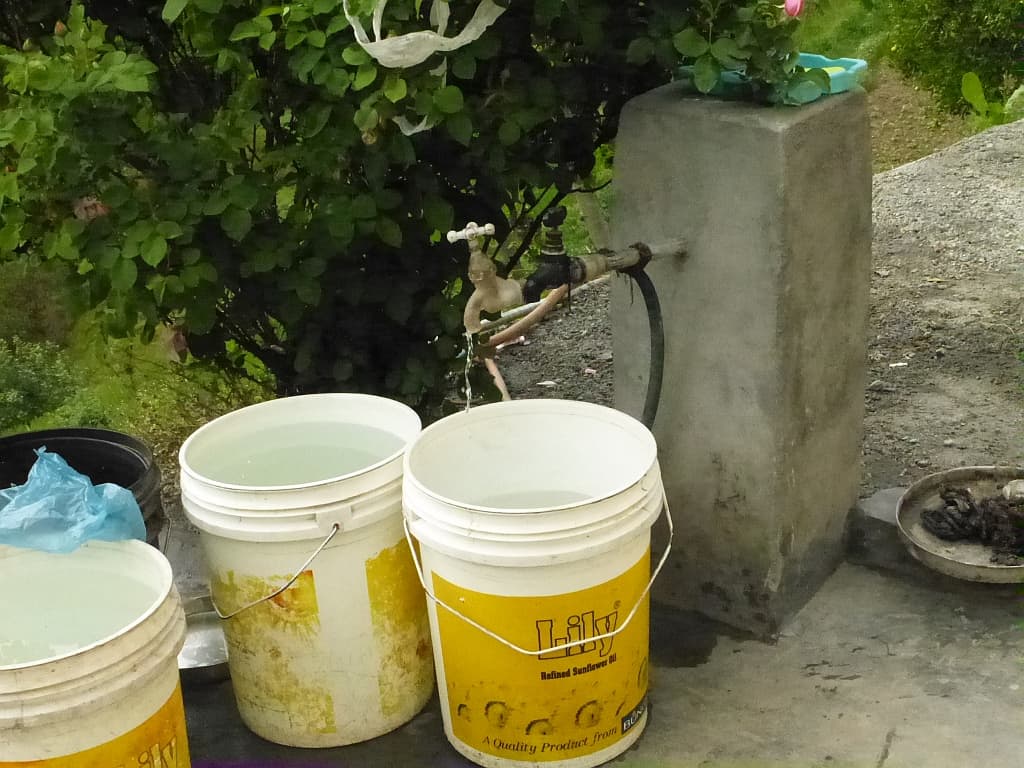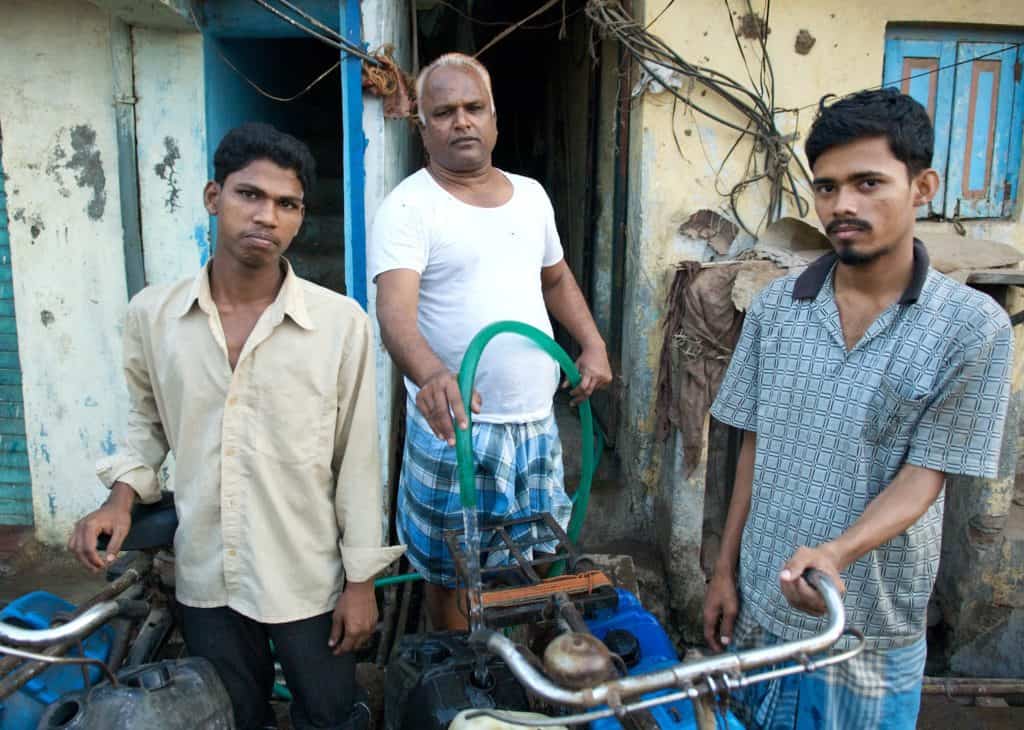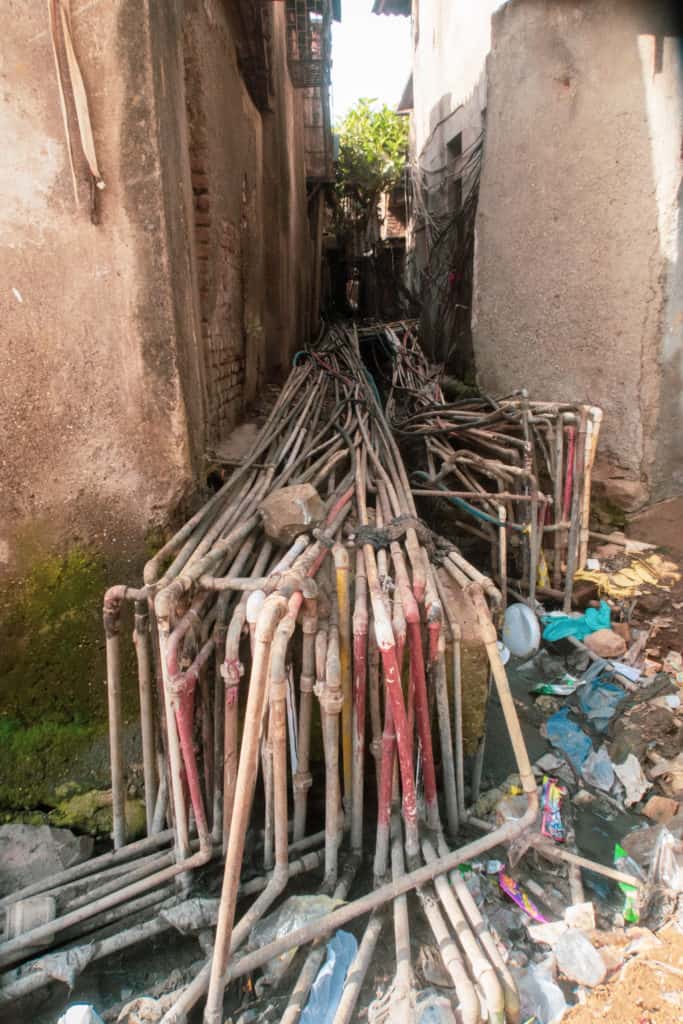Article 21 of the Constitution is interpreted as the right to safe drinking water for all citizens, even as Mumbai residents have struggled with an unequal and unreliable water supply. But from May 1st, the Brihanmumbai Municipal Corporation’s (BMC) has started to change this with its new water policy.
BMC’s new ‘water for all’ policy will ensure all residents – including illegal, informal settlements, buildings without occupation certificates (OC) and pavement dwellers – are eligible for water connections. An estimated 2 million+ people in 150 slums do not have access to adequate water, and 50% of buildings (over 50,000) in the city do not have an OC.
Informal settlements will be given water through standpost connections, whitch are common taps, shared among 15 houses (fewer on an individual basis). Those considered “legal,” built before 2000 will be charged a rate of Rs 4.44 per kilo litre (kl), while those built post-2000 will be charged Rs 5.94 per kl. The same will be given for footpath dwellers in a common washing area. Goathan or koliwada structures that have come up post-1995 will also get shared stand post connections, at a higher rate of Rs 8.88/kl. Non-slum residents without OCs will be charged Rs 11.89, twice the normal rate.
The policy is not new or unprecedented. In 2014, a PIL by the water rights collective Pani Haq Samiti led to a landmark judgement that established the government’s responsibility to provide water to all, irrespective of whether their home is deemed ‘legal’ or ‘illegal’. In doing so, it overturned a 1996 government notification cutting water supply of illegal slums (built after the cut-off date 1995, later shifted to 2000).
The BMC eventually sanctioned a policy in 2017, but included riders that often rendered it ineffectual. Many of those have now been overturned.

The new water policy
“This policy is more inclusive,” says Sitaram Shelar, co-founder of the Pani Haq Samiti. “It will have a big impact on the people living on central government, private land, in CRZ areas and pavement dwellers.”
In the previous policy, slums on footpaths, roads, private land (undeclared), along the coast and not included in the land-use plan or in areas marked for public use, or affected by other construction projects were excluded. They have all been included now.
Water connections for slums were conditional subject to a No Objection Certificate (NOC) by the owner of the land, whether that was the private landowner or government authority, in case of railway, central government, airport, salt pans land. This was, unsurprisingly, hard to get for slum dwellers seen as illegal encroachers.
Under the new policy, an NOC from a private land owner is no longer necessary. For those on government land, a water connection is subject to the authority’s rejection within 3 weeks of being informed. The Bombay Port Trust, which is the Special Planning Authority for 966.3 hectares on the city’s east, has already given their NOC and the railways were also planning to do the same, so a denial is not likely to come from them.
Exceptions persist for those on forest and mangrove lands, whose cases will be decided by the Court; dilapidated buildings, car parking and refuge areas are excluded.
An improvement, according to Sitaram, has also been made with regards to the documents allowed as the address and identity proof. The pool has expanded to include passport, voter ID, bank pass book, and more, from the earlier limited list of just Aadhaar and ration cards.
Yet, some shortfalls still remain.
| Structures | Rate (per 1,000 litres) |
| Slums built before 2000 | Rs 4.44 |
| Slums built after 2000 | Rs 5.94 |
| Goathans and koliwadas | Rs 8.88 |
| Buildings without OC | Rs 11.89 |
The new water rates for previously excluded structures under the policy. Data: BMC
Suggestions to improve the water policy
A water connection will only be given post the approval from the Assistant Commissioner of the ward, depending upon the presence of a sufficient drainage facility. If this is absent, it will have to be constructed at the applicant’s cost.
“The ward officers and engineers will continue harassing slum dwellers and make money on these grounds,” says Sitaram. “A stand post connection doesn’t need a licensed plumber for approval. We’ve written our suggestions to the government, and Additional Municipal Commissioner P Velrasu has told us the drainage component will be dropped.”
But this is a clause that could be beneficial in the longer run, says Prutha Vaze, a Program Manager with the climate program at WRI India. Prutha worked on the water segment in the Mumbai Climate Action Plan (MCAP), which lists per capita water supply of 150 lpcd for 100% of residents as a priority goal to be achieved by 2030. A proper sewage system is an undeniable component for it to be possible.
“It is good to know that water will be supplied, but where is the water going to go?” asks Prutha. “It will be helpful if underground sewage network is also established which is connected to the main sewage line, thus ensuring sanitation coverage as well.” This will also help reduce contamination due to the mixing of sewage into clean water and storm water drains, as well as reduce the sewage seeping into groundwater and the rivers.
The MCAP lists that the water supply to the city is 3,850 million litres per day (MLD), with the average per capita supply higher than national standards. But if the supply is to be extended to informal settlements and meet the requirements of future populations, rainwater harvesting and decentralised treatment and recycling of wastewater is going to be necessary.
“It matters that the conversation has started. When it gets flooded, the first impact is these areas lose access to water supply. With this policy in place, hopefully they won’t be deprived of basic right to drinking water especially post-disasters,” adds Prutha.
Read more: Izzat ka Pani: The story of a Mumbai resident’s long struggle for piped water
Non-OC buildings
For buildings and non-slum structures without occupation certificates, the situation is not likely to change by a lot. The BMC already provides water connections to them on a humanitarian basis, pressuring the residents, builders and developers to legalise by charging them double the rate for water supply. While the BMC had previously mentioned a cost reduction, the rate remains Rs 11.89/kl.
The corporation collects upwards of Rs 40 crore as this penalty.
But where these buildings have an advantage is the presence of water lines and pipes. Slums in remote places and on the edges of the coast, on account of their informal and illegal nature, do not have that as a guarantee, and might face another hurdle when applying for a connection under the new policy. The policy mentions that in the areas where the water distribution network is not available, the concerned assistant water engineer will prepare a proposal to get an approval to extend it.
The applicant will then have to obtain approvals from respective departments, and construct a general washing area at their own cost. An additional caveat is that if an adequate water network is found nearby, the applicant will have to take on the costs of transferring it to their location. If the applicant disagrees to take upon the costs, they will have to wait till after the water distribution network is laid, when it is laid.
“The municipal corporation collects enough tariff from water supply, and the good thing is they are progressive in their rates, charging less to slums and more to high rises, institutions and industries,” says Pranjal Deekshit, Assistant Professor at the Centre for Water Policy and Governance, Tata Institute of Social Sciences (TISS). “They have sufficient funds and technical capabilities to extend the water infrastructure capacity to slums. And if it isn’t done properly, it will mainly result in temporary connections.”

Can any water policy compete with the challenges of informality?
The onground effect of the policy, irrespective of the conditionals, are harder to predict.
“Slum water supply is a highly politicised issue,” says Pranjal. “The BMC, local politicians, corporators, political parties are all involved in the details of water access. Informal suppliers, tanker operators, can operators, ATMs.”
Lisa Bjorkman, in her paper Unknown Waters: navigating the everyday risks of infrastructural breakdown in Mumbai, describes such an arrangement in the Shivajinagar-Baiganwadi slum cluster. Due to the reducing pressure and timings of water supply through the shared municipal taps, residents were increasingly opting to get individual taps, taking up the costs of the piping and fitting themselves. They would then offset this by selling the water to their neighbours.
But the proliferation of the individual water taps in the half-a-million neighbourhood led again to a reduction in pressure, the initial problem. The fix that emerged was transferring their connections to a main water line farther away. They could go about this in two ways: legally, through a licensed broker (or plumber) and water department, or illegally.
While the first option is a lot more secure, the uncertainty of water supply even through formalisation favoured the second, cheaper option. This arrangement is hardly ideal either. The plastic “spaghetti” pipes snake over ground and open drains to reach the main pipes half a kilometre away, vulnerable to damage, contamination, theft (by a simple cross connection to another parallel pipe), etc.

As security, a local resident, often affiliated with a political party and in conjunction with social workers, safeguards the connections, keeping a watch on changes, new connections, water department engineers and plumbers. This is conditional to a fee paid, called “bhai charges.”
With slight alterations, this pattern of paying informal suppliers and connectors to negotiate connections and access is widespread in the city. Connections owners are often an arm of the supply chain, selling the water to neighbours or in jerry cans. And those who suffer are at the bottom end of the chain, paying an amount as high as Rs 700 for a month’s water supply.
“The success of the policy will depend on how these informal substitutes respond to the formalisation, and how they will be dealt with,” says Pranjal. “That will be tricky, both for the corporation and Pani Haq Samiti and others working in the field.”